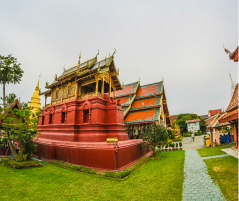Century eggs, also known as preserved eggs or hundred-year eggs, have long been shrouded in mystery and intrigue. These unique delicacies, with their dark, translucent appearance and distinctive flavor, have sparked curiosity and fascination among food enthusiasts around the world. In this article, we will delve into the enigmatic origins of century eggs and debunk common misconceptions surrounding them.
Unraveling the Enigmatic Origins of Century Eggs
The process of creating century eggs dates back centuries to ancient China, where they were originally made by coating duck, chicken, or quail eggs in a mixture of clay, ash, salt, quicklime, and rice husks for several weeks to several months. This traditional method of preservation effectively transforms the egg white into a gel-like substance and the yolk into a creamy, amber-colored delicacy. Despite their name, century eggs are typically aged for only a few weeks to a few months, not a hundred years as the name suggests.
One of the key factors that contribute to the unique flavor of century eggs is the alkaline pH of the preserving mixture, which alters the proteins and fats in the egg, resulting in a rich, umami taste. The fermentation process also enhances the egg’s aroma and texture, creating a complex and savory flavor profile that is unlike any other. While century eggs may seem unappetizing to some due to their appearance and pungent odor, many food enthusiasts appreciate their bold and distinctive taste.
The popularity of century eggs has spread beyond China and can now be found in various Asian cuisines, where they are often used in dishes like congee, salads, and stir-fries. Despite their unconventional appearance and preparation method, century eggs continue to intrigue and captivate adventurous eaters who are willing to explore the world of culinary curiosities.
Debunking Common Misconceptions Surrounding Century Eggs
One common misconception about century eggs is that they are made by burying eggs in the ground for a hundred years, leading to the belief that they are extremely old and possibly unsafe to consume. In reality, century eggs are typically aged for a few weeks to a few months in a controlled environment, where the preserving mixture effectively transforms the eggs into a unique and flavorful delicacy.
Another misconception surrounding century eggs is that they are made using harmful chemicals or toxic substances. While the traditional preservation method may involve ingredients like quicklime, which is alkaline, these substances are carefully measured and controlled to ensure the safety and quality of the final product. Century eggs undergo a natural fermentation process that results in their distinctive flavor and texture, making them a popular ingredient in various Asian dishes.
Despite their unconventional appearance and preparation method, century eggs are a beloved delicacy in many parts of Asia and beyond, valued for their bold flavor and unique texture. By unraveling the enigmatic origins of century eggs and debunking common misconceptions surrounding them, we can gain a better appreciation for these intriguing culinary creations and the rich cultural traditions that have shaped them.
In conclusion, century eggs may be mysterious and unconventional, but they are a testament to the ingenuity and creativity of culinary traditions that have been passed down through generations. By exploring the enigmatic origins of century eggs and debunking misconceptions surrounding them, we can better understand and appreciate the rich history and cultural significance of these unique delicacies. So, the next time you come across a century egg, don’t be afraid to embrace the mystery and savor the complex flavors that have captivated food enthusiasts for centuries.





